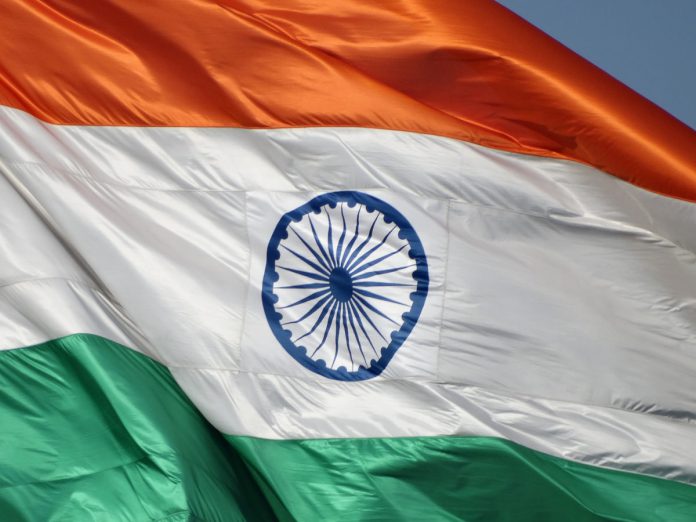India’s total solar energy potential is estimated at around 750 GW. Against a near-term target of 100 GW by 2022, the country had installed a total of 31.69 GW of cumulative grid-connected solar capacity as of Oct. 31, 2019.
While annual capacity additions have nearly doubled every year since 2014-15, the 2018-19 period was an exception, with annual capacity additions plunging to 6.5 GW, versus 9.36 GW in 2017-18. Capacity additions hit 5.5 GW in 2016-17 and 3.02 GW in 2015-16, according to statistics that were recently published by Minister of Power Raj Kumar Singh.
“PV installations are estimated to have decreased in 2019 compared to 2018 due to political uncertainties, module price increases associated with safeguard duties, and a fewer number of awarded tenders,” said Dharmendra Kumar, senior analyst for IHS Markit.
Issues like delays in payments by distribution companies in some states, delays in the adoption of tariffs by state electricity regulators, and the reopening of contracts by the Andhra Pradesh state government have also hurt investor sentiment. But following a period of turbulence, annual installations are set to pick up significantly in 2020 to march well past the 10 GW mark.
Reasons for optimism
The safeguard duty for solar cell and module imports, which has already come down to 20%, will further decline to 15% between Jan. 30, 2020, and July 29, 2020. The subsequent decline in module procurement costs will see installations pick up in the Indian market, which has been held back by the high cost of imports.
Kumar expects 2020 installations to reach at least 10 GW or even higher for several reasons, including lower module prices.
“Firstly, module prices are expected to be below $0.20/W by December 2019, inclusive of safeguard duties for shipment in Q1 and Q2 2020,” Kumar said. “Local suppliers are also offering modules on par with Chinese suppliers in terms of pricing. The expected decrease in module prices will boost installations throughout 2020 as solar becomes more price competitive.”
Projects that didn’t come online in 2019 will also completed by the first quarter of 2020, he added. “In addition, 7 GW of projects that were awarded in 2019 will be installed in 2020, along with another 5 GW of tenders that are yet to be awarded,” he said.
Module trends
PERC monocrystalline modules are becoming popular in the Indian market, which has been dominated by lower-priced multicrystalline PV modules thus far.
“As PV module prices continue to be a core consideration for determining project economics for PV developers and EPC contractors, multicrystalline PV modules still retain a significant share of the Indian market because of their lower prices,” Kumar said. “However, although the monocrystalline share is still lower than in other markets, we are witnessing a strong growth of PERC monocrystalline modules in the Indian market, in an alignment with the global demand trend towards higher-efficiency monocrystalline modules.”
IHS Markit expects significant installation growth for bifacial modules from 2020 throughout the world, but India will not be one of the core markets for this technology. However, while bifacial will not be a core part of the market, a recent deal between Indian developer Adani Green Energy and Chinese module manufacturer Longi Solar for the procurement of up to 1.2 GW of Hi MO4 bifacial modules by 2020 signals that India will catch up on this trend over time.
PV and storage
Energy storage systems for PV projects are still not cost-effective in India, and that’s holding back deployment.
“Solar+storage projects are yet to pick up in India because of the relatively high capital cost of stationary energy storage systems and the price sensitivity of customers in India. Customers have been considering more cost-effective solutions such as hybrid combinations of lead-acid and lithium batteries but the prices are still not cost-effective for solar projects in India,” said Kumar.
BloombergNEF India analyst Atin Jain told pv magazine that renewables with battery storage will cost three to five times more than standalone renewable projects in India in 2020. “Also, smaller storage systems (storage backup for 25% of generation capacity) generally offer better economics than larger ones (storage backup for 100% of generation capacity),” Jain said.
BloombergNEF expects peak-hour supply bids in Solar Energy Corp. of India’s (SECI) 1.2 GW renewables+storage auction to be at least twice the offered off-peak hour supply rate. “This could test the appetite of SECI and distribution utilities to buy power from these projects,” said Jain.
The SECI tender requires storage to back up at least half of the 1.2 GW of capacity offered in the auction.
“We are closely monitoring the development of this tender, as this could be the most meaningful advancement of energy storage contracts in the country’s history,” said Jain. “We are still gauging what the interest from developers will be in this. Indian IPPs have zero to limited experience with energy storage projects, and terms of the tender may be seen as too aggressive by some to participate.”
Jain believes the SECI renewables+storage tender is a first step towards deploying dispatchable renewables in India. In the future, more renewables+storage tenders will likely be floated, provided the distribution utilities and SECI are comfortable with the tariffs achieved in auctions.






